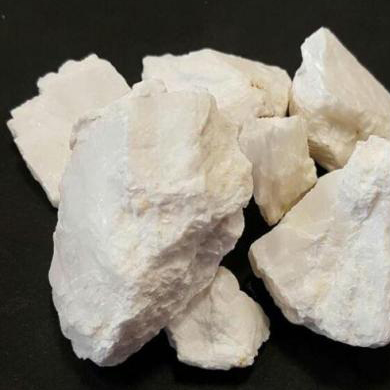Minerals

Quicklime
Overview Quicklime, also known as calcium oxide (CaO), is a versatile and high-performance chemical compound widely used across industries. Produced by heating limestone (calcium carbonate) in a kiln, quicklime is renowned for its purity, reactive properties, and broad applications in construction, industrial processes, and agriculture....
More Details
Sponge Iron Sludge
Sponge iron sludge refers to a byproduct or waste material that is generated during the production of sponge iron, also known as direct reduced iron (DRI). Sponge iron is produced by reducing iron ore (usually in the form of pellets or lumps) in the presence...
More Details
Iron Ore Pellets
Iron ore pellets are small, round balls of iron ore that have been processed from iron ore concentrate. They are used as a key raw material in steel production, especially in blast furnaces and direct reduction iron (DRI) processes. Iron ore pellets have a high...
More Details
Iron Oxid Shell
An "iron oxide shell" refers to a thin layer of iron oxide that forms on the surface of iron or steel when it reacts with oxygen in the air or other oxidizing environments. The formation of this shell is part of the **oxidation process** and...
More Details
Iron Ore Concentrate
Iron ore concentrate is a refined and processed form of iron ore, specifically produced to increase the percentage of iron (Fe) and remove impurities like silica, alumina, phosphorus, and sulfur. It is an intermediate product used in steelmaking after it has been beneficiated or upgraded...
More Details
Hematite
Hematite is an iron oxide mineral with the chemical formula "Fe₂O₃". It is one of the most important iron ores, as it contains a high percentage of iron. Hematite appears in a variety of colors, ranging from metallic gray or black to reddish-brown, depending on...
More Details
Halite, commonly known as rock salt, is a naturally occurring mineral form of sodium chloride (NaCl). It is primarily composed of salt and is often found in sedimentary rocks, particularly in salt beds formed by the evaporation of water in ancient lakes, seas, or oceans....
More Details
Cement is a fine, powdery substance that, when mixed with water, forms a paste that hardens over time. It is a key ingredient in concrete and mortar, which are widely used in construction for building infrastructure such as roads, buildings, and bridges. Here are some...
More Details
Clinker
Clinker is a key intermediate material in the production of cement. It is formed during the sintering phase in cement production, where limestone (calcium carbonate) and other raw materials are heated in a rotary kiln to form solid nodules. These nodules, or clinkers, are later...
More Details
Bentonite
Bentonite is a highly absorbent clay material primarily composed of montmorillonite, a type of smectite mineral. It is formed from the weathering of volcanic ash and is notable for its ability to swell when in contact with water, making it extremely versatile for various industrial...
More Details
Baryte (also spelled "barite") is a mineral composed of barium sulfate (BaSO₄). It is notable for its high specific gravity, which makes it a key material in various industrial applications. Baryte occurs in a variety of colors, including white, yellow, blue, gray, and brown, and...
More Details
Copper concentrate
Copper concentrate is a product derived from the processing of copper ores. It is an intermediate material that contains a high percentage of copper, typically between 25% and 35%, along with other valuable metals such as gold, silver, and molybdenum. The concentrate is then refined...
More Details
Coke fuel is a high-carbon product derived from coal, used primarily in the steelmaking process. It is created by heating coal in the absence of air, which drives off volatile compounds, leaving behind a solid carbon-rich material. Here are the key aspects of coke fuel:...
More DetailsLoading